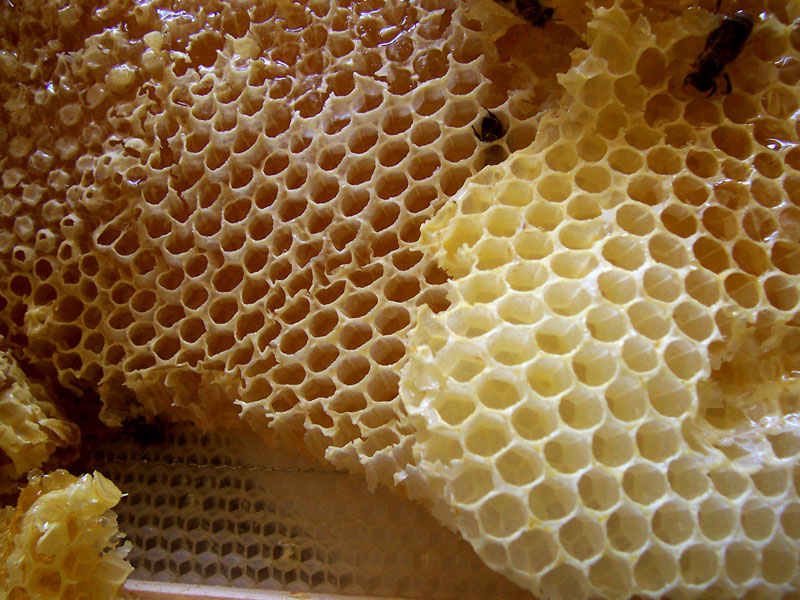Red Honey
In general, cities and agriculture — of any kind, really — do not mix. You won’t find many, if any, orange groves in Manhattan. There are few (but there are, actually, a few) chicken coops in Brooklyn. And cows in Queens? Not happening. The last working Manhattan farm closed in the 1930s.
But there are always exceptions, and beekeeping is one of them. There is a group of New York City beekeepers with over 1,700 members on Facebook. In March 2010, the city lifted a ban on raising honeybees, and per the New York Times, by June 2012, roughly 100 people had registered nearly 200 hives with the New York City Department of Mental Health and Hygiene. And many other unregistered ones exist; in August of 2012, the city seized three million bees from a keeper who kept his hives too close to his neighbors’ residences. By and large, though, the bees of New York are rare and no more annoying than pests that are actually common to the urban landscape. And in one case, the city has been a nuisance for the bees, and not the other way around.
In 2010, groups of honeybees from hives in Brooklyn’s Red Hook neighborhood started producing honey — but not the amber stuff we’re familiar with. Their honey was, for some reason, red.
The Times, in a second article, explained the most likely cause. Red Hook is home to a maraschino cherry plant which, of course, makes the red juice that their maraschino cherries swim in. That liquid uses Red Dye Number 40. And the bees were most likely drinking the dye. As a Brooklyn beekeeping blog observed, “when honeybees find a source of high-density food, such as the high-fructose corn syrup (HFCS) used in the manufacture of maraschino cherries, they don’t think twice about whether the source is natural, safe, or convenient. They take it for what it is—a chance to make it to next year.” While the dye probably isn’t all that dangerous for the bees, it does tend to affect the honey, making it metallic-tasting (although still safe to eat).
Red Hook isn’t alone in this phenomenon, and honey can turn into more colors than just red. As Reuters reported in 2012, French beekeepers noticed that their bees were producing blue and green honey. The source of the color contamination? A nearby M&Ms factory.
Bonus fact: Red honey may look like cough syrup — and may actually be a good cough syrup alternative, too. In fact, all honey is. According to the Mayo Clinic, honey is as effective as a night-time cough suppressant as the leading over-the-counter cough medicines. (It shouldn’t, however, be used for children age one and under, as honey can cause botulism in infants.)
From the Archives: Radioactive Red: What if the bees had eaten this stuff? Or red M&M dye (check the bonus fact)? Also, The Buzzing Supercomputer: Bees can be really smart.
Related: Raw honey (and hopefully not red, blue, or green).

